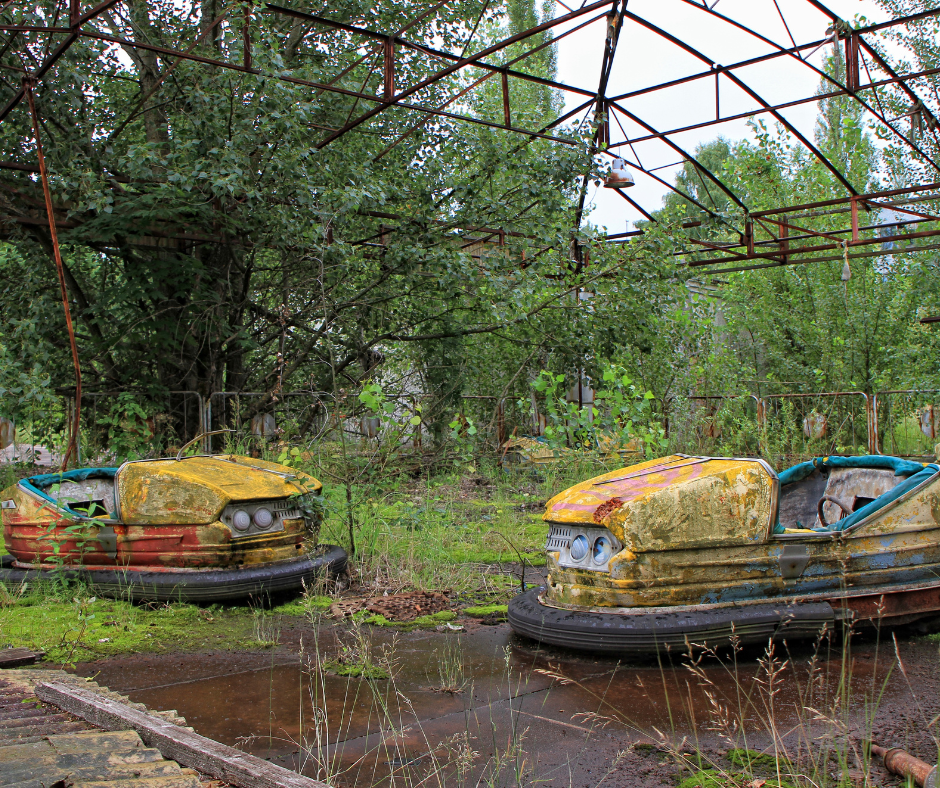If you’re looking for a unique and haunting experience, a visit to the site of the Chernobyl disaster could be just what you need. The Chernobyl disaster occurred on April 26, 1986, at the Chernobyl nuclear power plant in Ukraine. It was caused by a flawed reactor design and human error. As a result, a massive explosion and radioactive material were released into the environment.

Permit to visit Chernobyl.
Today, the Chernobyl Exclusion Zone is a 30-kilometer radius around the former power plant. It is still uninhabitable and closed to the public, with only a few exceptions.
However, you can obtain a special permit from the Ukrainian government to visit the site. Booking your tour well in advance is recommended, as tickets can take several weeks to process. To apply for a permit, you must provide personal information, including your full name, date of birth, passport details, and a contact phone number. Additionally, you’ll need to provide proof of medical insurance and sign a waiver acknowledging the risks of visiting the area. Once your permit is approved, you’ll be provided with a detailed itinerary and safety guidelines to ensure a safe and respectful visit to the site of the Chernobyl disaster. Licensed guides have to accompany you during your stay. The tours typically last for a full day. Visitors explored the abandoned towns and villages within the Exclusion Zone and the Chernobyl power plant during that time.

Exploring Pripyat
The tour begins at the checkpoint outside the Exclusion Zone. Visitors must pass through a radiation detector and present their permits to the authorities there. Then the group is taken by bus to the first stop on the tour, the abandoned city of Pripyat.

Pripyat was once a thriving city of 50,000 people, built to house the workers at the Chernobyl power plant. Today, it stands as a ghost town, frozen in time since the evacuation that followed the disaster. The buildings are crumbling; the streets are overgrown with vegetation. Once-bustling parks and playgrounds are empty.

As visitors explore Pripyat’s abandoned buildings and streets, they can see the remnants of everyday life that were left behind when the city was evacuated. For example, schoolbooks lie scattered on the floor of an abandoned classroom. A doll lies abandoned on a windowsill. Rusted bumper cars sit silently in an abandoned amusement park. One of the most haunting sights in Pripyat is the left Ferris wheel. Today, it is a rusted monument to the tragedy that struck the city.

Exploring Reactor 4
After exploring Pripyat, the tour continues to the Chernobyl power plant itself. Visitors can see the remains of Reactor 4, the site of the explosion. The reactor building is now encased in a massive steel and concrete structure called the New Safe Confinement. It was built to contain the radioactive material that remains inside. Visitors can also see the abandoned control room, where the operators made the fatal mistakes that led to the disaster. The room is filled with old equipment and debris, and radiation warnings cover the walls.

Throughout the tour, visitors are reminded of the dangers of radiation and the importance of following the safety rules. The guides carry radiation detectors and check the levels frequently. Moreover, visitors cannot touch or take anything from the Exclusion Zone.

Controversy
Despite the beauty of the abandoned buildings and the unique insights that the tour offers into the Chernobyl disaster, some controversy surrounds visiting the site. Some argue that the tourist industry trivializes the tragedy and disrespects the victims and their families. Others worry that the influx of tourists could damage the fragile ecosystem of the Exclusion Zone and lead to further radiation exposure.

It’s worth noting that the Exclusion Zone has become a natural haven in the decades since the disaster. With no humans living there, the area has become a refuge for wildlife and plants. Many rare and endangered species live in abandoned buildings and overgrown forests. Some scientists believe that the Exclusion Zone could serve as a model for studying the long-term effects of radiation exposure on ecosystems.

To mitigate these concerns, the Ukrainian government and the operators of the Chornobyl site have taken steps. The number of visitors is strictly limited, and the tours are conducted respectfully and educationally. The Exclusion Zone is also closely monitored to ensure that the ecosystem is not harmed and that radiation levels remain safe for visitors.

Why is visiting Chernobyl worth it?
Many believe that visiting the Chernobyl Exclusion Zone can help raise awareness about the dangers of nuclear power. It shows the importance of taking precautions to prevent disasters like Chernobyl from happening again. The Chernobyl disaster was a wake-up call for the world, highlighting the risks and consequences of nuclear accidents. By visiting the site and learning about the tragedy, visitors can better understand the risks involved and the importance of nuclear safety.

Overall, visiting the site of the Chernobyl disaster is a unique and thought-provoking experience. It offers insights into one of the most catastrophic events in modern history. It’s a chance to learn about the dangers of nuclear power and pay tribute to the victims and their families. You can see the eerie beauty of a world frozen in time. While it’s not a destination for everyone, those interested in history and the environment may find it a truly unforgettable experience.
Summary
In conclusion, visiting the site of the Chernobyl disaster can be a once-in-a-lifetime experience. The tour offers a unique opportunity to witness the aftermath of one of the most catastrophic events in modern history. Visitors can also better understand the risks and consequences of nuclear power. It’s important to remember that visiting the Exclusion Zone should be respectful and educational. Safety precautions are in place to protect visitors and the area’s fragile ecosystem.
Check out other articles:
Traditional Healing Practices around the World

